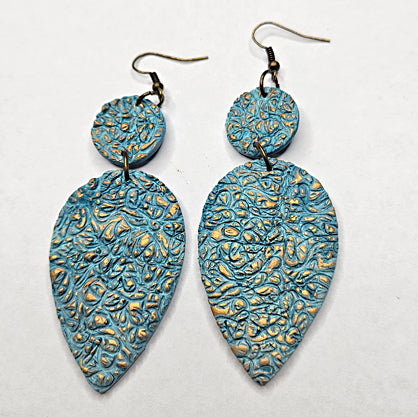Sculpey Soufflé™ Textured Verdigris-Look Earrings
Sculpey Soufflé™ Textured Verdigris-Look Earrings
Read More
Adding a team of my favorite surface treatments to one of my favorite Sculpey Soufflé™ colors was so fun and exciting I scared my dog by squealing when I added those highlight colors to the textured clay! This is a quick and easy project that just LOOKS complicated!
TIME TO COMPLETION: 30 minutes to make, 30 minutes to bake/cure
Read Less
ADDITIONAL SUPPLIES
- Gilders Paste in your favorite colors – I used Patina and Celtic Bronze
- Gloves to keep your hands clean
- Your selected texture – I’ve used a Soap Saver (available near the bath soaps)
- Couple sheets of clean white computer paper
- I also used a smaller round cutter to punch out the top of the earrings from my leftover sheet of clay.
- Findings – 2 ear wires and 2-4 jump rings
- NOTE: An acrylic roller can be substituted for the Clay Conditioning Machine for this project
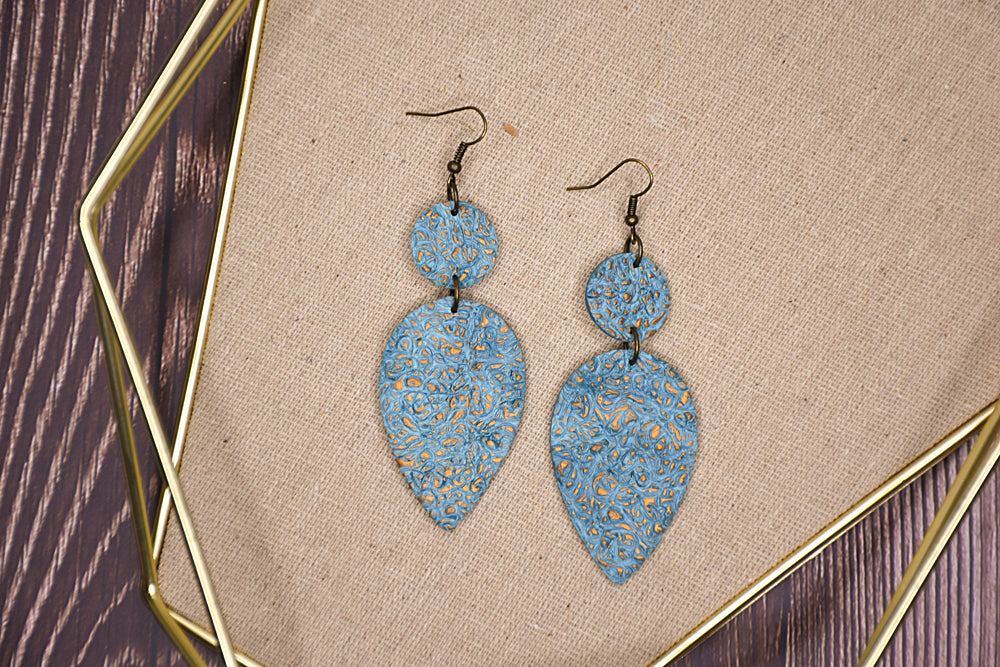
Project Instructions
Step 1
Step 2
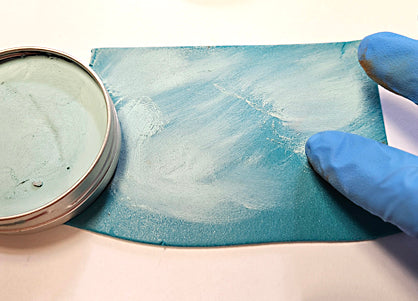
Step 3
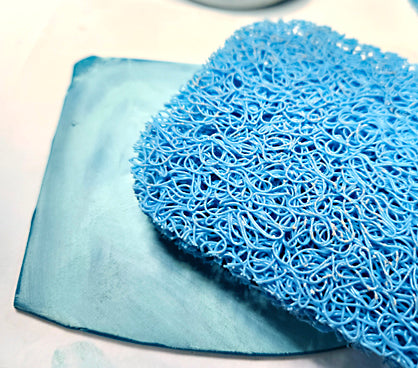
Step 4
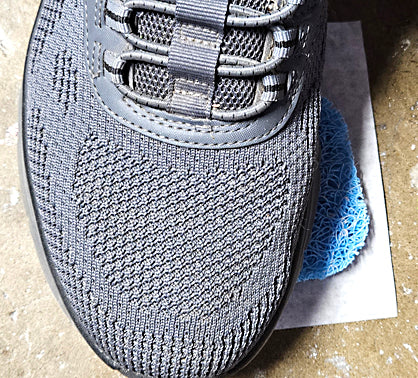
Step 5
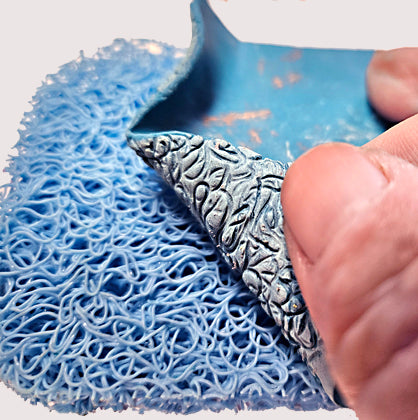
Step 6
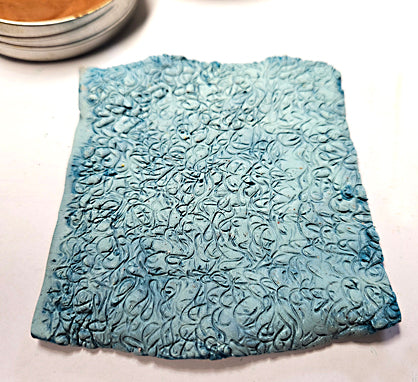
Step 7
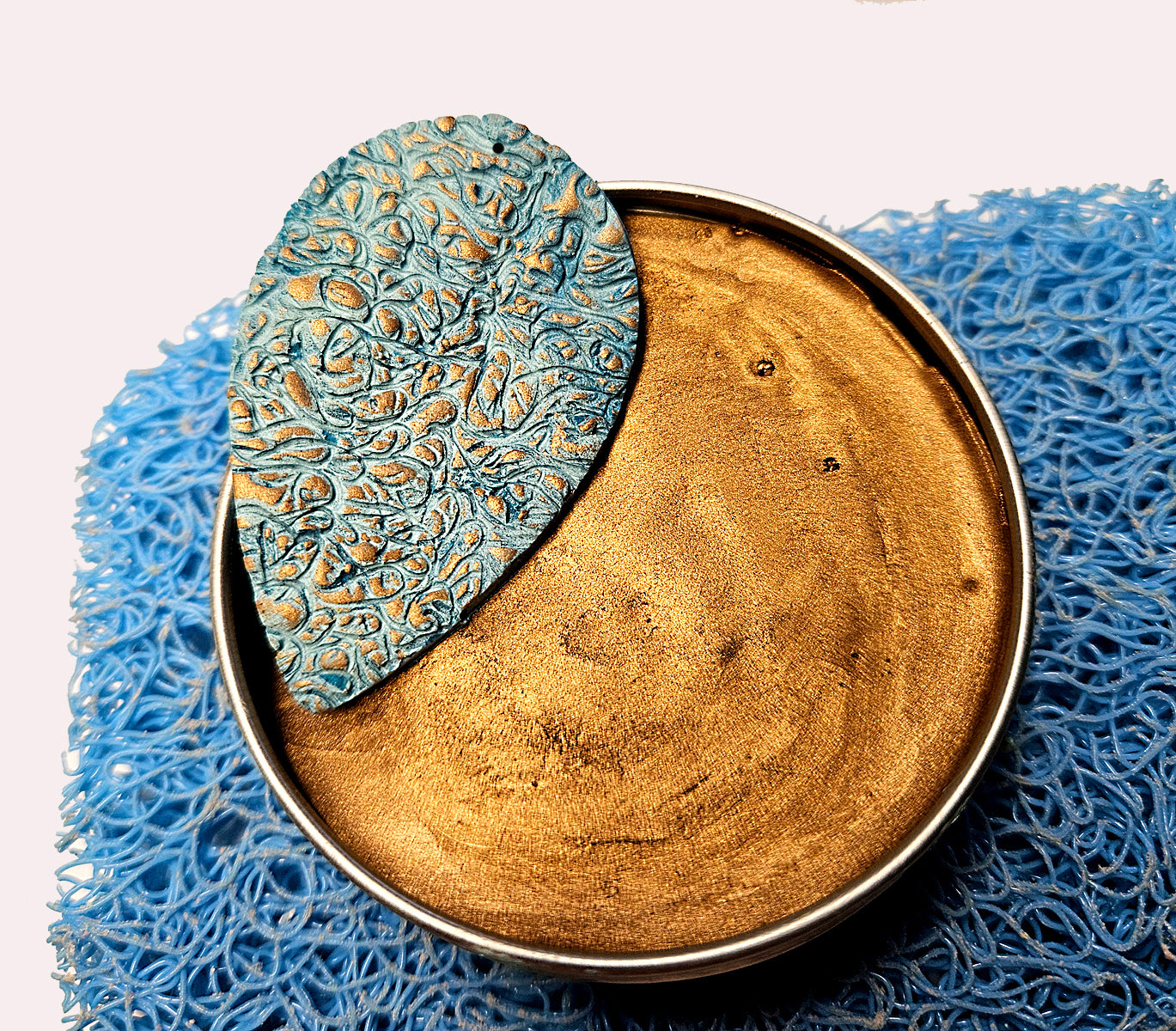
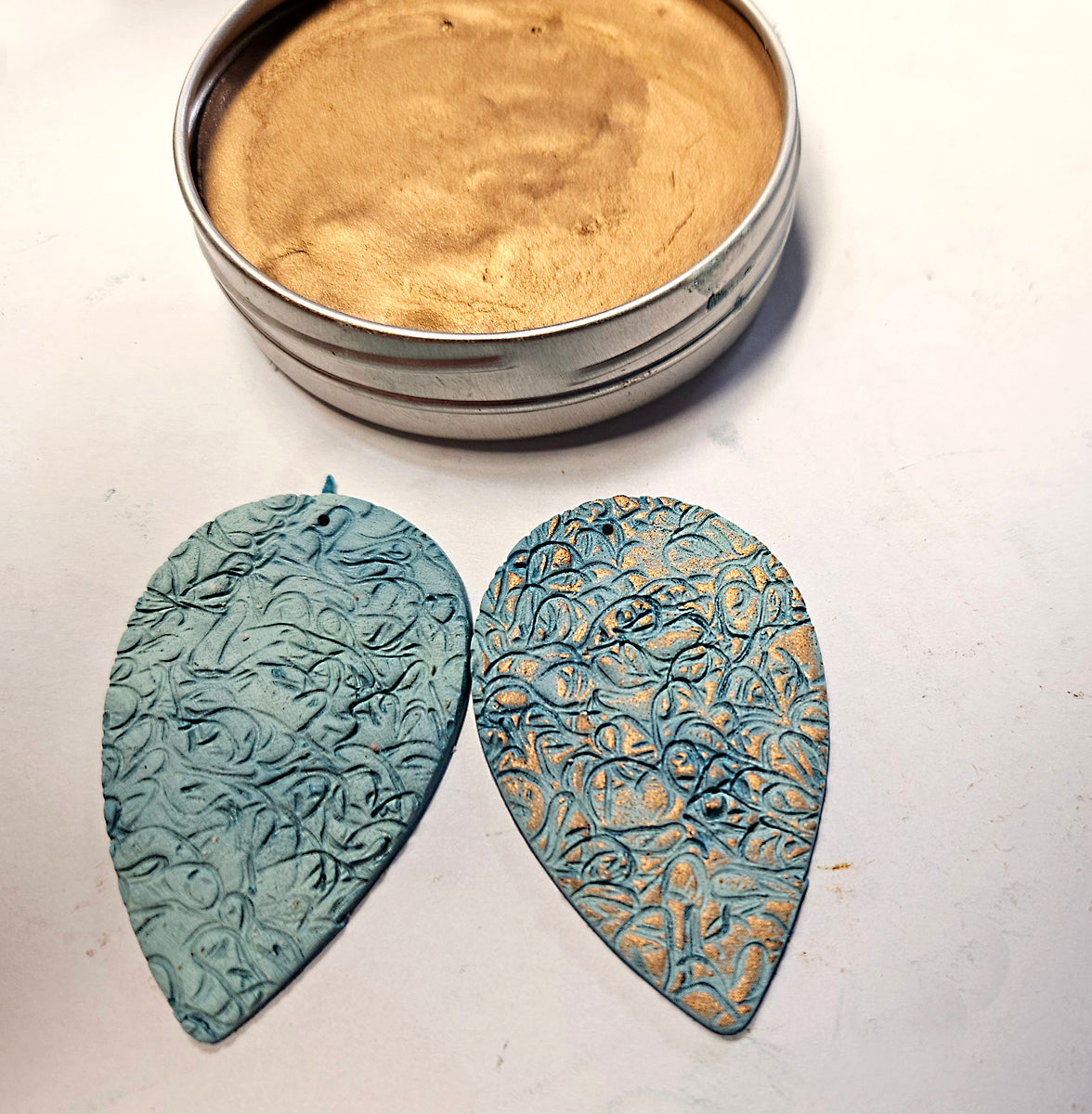
Step 8
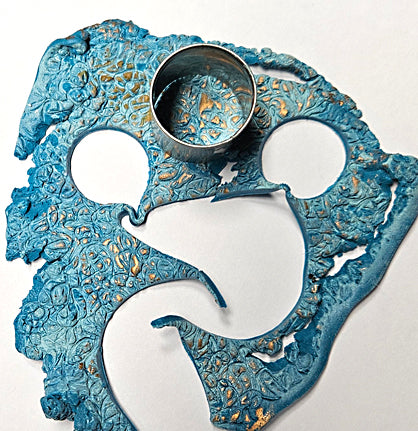
Step 9
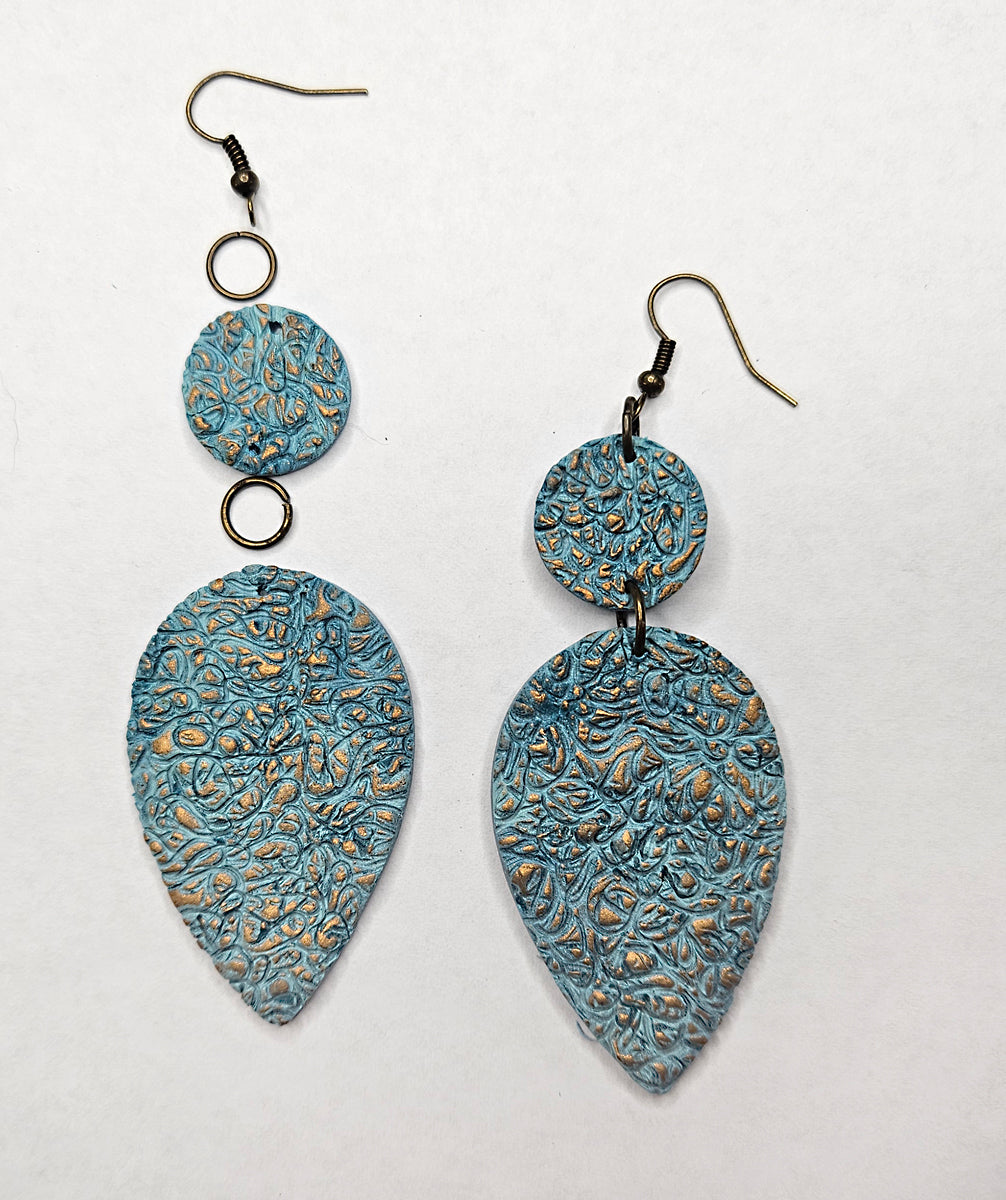
Step 10
